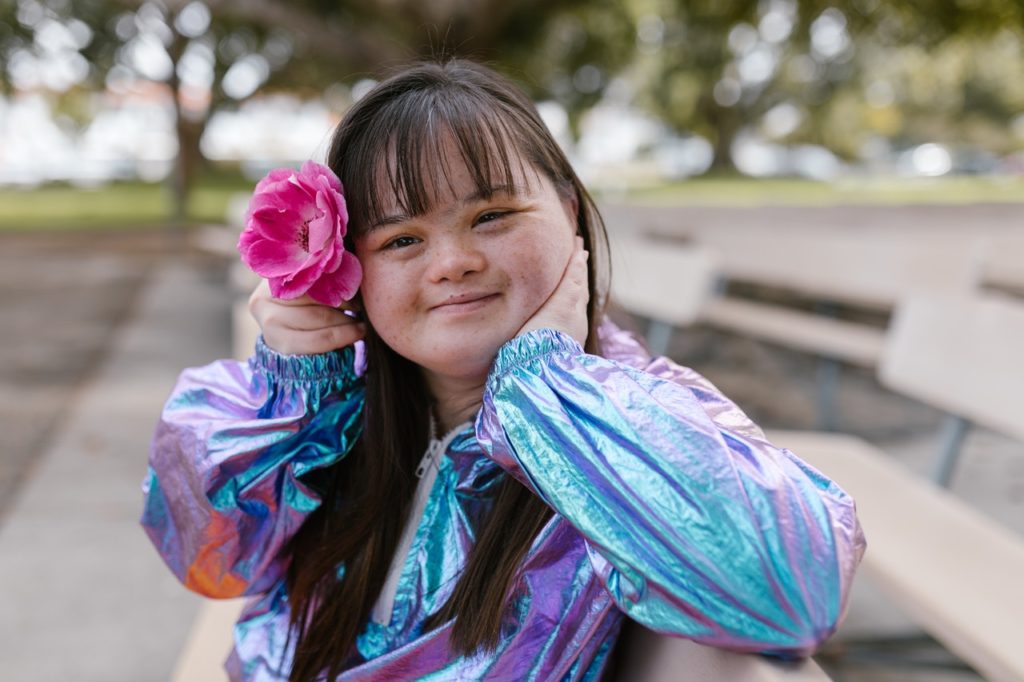Table of Contents
Definition of Dysnomia
Dysnomia is a learning difficulty that describes a person’s difficulty in remembering names, words, and other identifying information. It is commonly termed “tip of the tongue syndrome” as people with dysnomia often complain that the word for something or someone’s name feels like it is just on the tip of their tongue, but they just can’t quite fully recall it.
Often confused with language processing disorders, dysnomia is actually a type of expressive aphasia which is a difficulty in speaking. Language processing disorders describe a person’s difficulty with processing incoming linguistic information while dysnomia describes a difficulty in memory recall of words when writing or speaking themselves but not in recognition when others use those words.
Dysnomia can result from a large number of causes from dementia, alcohol use, brain damage, or simply as a natural area weakness in a child due to their personality, genetics, and upbringing. While medical causes will require a doctor to deal with the root causes, whether as the result of a specific incident or not, there are interventions that teachers can employ to ensure these students can keep up with the rest of class and not get held back by missing words.
Identifying Dysnomia in the Classroom
Teachers of students with dysnomia often describe their students as:
- Often forgetting their classmates’ or teachers’ names
- Struggling with vocabulary when given the definition and asked for the word, but not when given the word and asked for the definition.
- Regularly forgetting the name for objects, places, or ideas.
- Having difficulty learning new languages
- Writing at a below grade level standard, lacking class terminology
Dysnomia vs. Anomia
Dysnomia and anomia describe the same difficulty in recall of words, but differ in their severity. While a person with dysnomia will struggle to recall words on occasion, they are still able to communicate to an effective degree.
Anomia is an extremely severe reduction in a person’s ability to remember even very simple words in their mother tongue. Anomia usually is a very serious symptom requiring hospitalization or the result of severe brain damage and not something to be dealt with in the classroom.
5 Targeted Interventions for Dysnomia
- Use mnemonics to make key concepts stick.
The most obvious intervention for a memory difficulty would be the targeted memory techniques of mnemonics. Names often are concepts that are completely unconnected with the thing they describe, making recall very difficult.
For example, words like “stoplight” are very clear in their meaning as they contain “stop” and “light” which hint to their meaning, but not all words are like this and this is why names of people, places and things are often the hardest things to remember. For example there is nothing obvious in words like “igneous”, “Constantinople”, or “Pythagorean Theorem” to hint to the student their meaning.
While students may still forget words even with the most obvious and clear meanings, they will often struggle with remembering words with absolutely no connection to what they describe. Names are often particularly difficult for them as there is nothing “Sarah-like” to any person named Sarah and nothing “Joshua-esque” about anyone called Josh.
Mnemonics work for students with dysnomia by connecting the name with something else to give another pathway for the brain to find the memory trace which is hidden in there somewhere. An often used one is to have the student make an acronym for lists of difficult names to remember.
Probably the most common of these is “My Very Educated Mother Just Served Us Nine Pizzas”. Where the letter at the start of each of the words in the sentence stands for one of the planets in our solar system: Mercury, Venus, Earth, Mars, Jupiter, Saturn, Uranus, Neptune and Pluto. Hardline Pluto exclusionists can replace “Nine Pizzas” with “Nachos” or even “Nothing” if they are feeling particularly negative.
Other common mnemonics include making associations using alliteration. For example it can help remember people’s names if they associate a personal trait of the person with their name like “Smiling Sarah”, “Tall Tim” or “Funny Phoebe”. They will have the visual clue from the person’s most striking trait to tell them the first letter of their name, making it easier to recall.
Additionally, sometimes a funny story or pun can make a name stick better than anything else. For example, it is easy to remember the capital of Turkey, Ankara, with the funny sentence “You can’t eat a Turkey and care about it” if the “and care about it” part is pronounced like “Ankara bout it”.
It’s also fun to elicit pained groans from students when helping them learn the difference between “principal” and “principle” by telling them that the “princiPAL” is their “pal” in the office upstairs. Though it may be silly, these types of things often can be remembered decades after they are first learned.
- Give them questions requiring descriptions or definitions.
When calling on students to answer questions in front of the class, it can be very helpful if the teacher gives students with dysnomia questions where they are not required to recall a single name. Instead, giving them questions where they must define a word given to them, or discuss a concept in a broader sense will be less likely to embarrass them in front of their friends.
While they will still need to be able to answer these types of questions, it can be quite embarrassing to forget simple things in front of a group of people and can make students worried that their peers will think them unintelligent. To build their confidence, start with either things they know well or questions that do not require the recall of a name. Then once the teacher learns their student on a more individual level, they can use their professional judgment to know what types of questions will be most helpful for their learning.
- Teach them independent strategies to jog their memory.
Teachers can not always be making up fun mnemonics and hold their hand through class activities. In addition to the strategies above, teachers should be working with the student to help them develop independent strategies to be able to either remember or quickly look up terms or names they do not remember.
Tools like thesauruses, search engines, and AI chatbots like ChatGPT can all help students remember the words for things they are struggling to recall. Because they do not require any support from the teacher to utilize, they also can be taken into university and their professional lives as well.
Thesauruses can help students who remember a closely related word, but not the exact word they are searching for. If they can not remember the word genuine, but remember that it is a person who is being honest, they can search for words closely related in meaning to “honest” and “genuine” will pop up as an option to jog their memory.
Search engines can also be used to help remember words for students with dysnomia. Students struggling to remember a word when they remember the definition can search for the definition and often the results will include results with their target word included.
ChatGPT is a fantastic tool for students with dysnomia as they can casually describe what word they are looking for as they would to a friend or teacher and the AI will use its database of knowledge to give its best guesses as to the word the person is looking for. The benefit of ChatGPT over a search engine is that search engines tend to have a lot of useless information in addition to the target word the student is searching for, but ChatGPT will cut out the unimportant information and only give a short response including a few options it thinks are most likely.
- Guide them to focus their notes on names.
Note taking is a skill that students rarely use terribly effectively. Students with dysnomia often take quite general notes that do not work to target their areas of weakness. Teachers should guide students to make their notes highlight terms and names most prominently.
This can be done with an actual highlighter or by writing names in a larger font. Additionally, students taking digital notes could attach images to the names and terms they learn to help them have a visual cue to connect when they need to recall a term.
When going through notes, they could have a separate section of key vocabulary definitions at the end of each day’s or unit’s notes. When studying, they can read through the definitions and attempt to recall the term the definition describes. If they can not remember, they can flip back through their notes to find the term they have forgotten.
While it is helpful for memory to simply write things down, students can benefit even more from structuring their notes in ways that target and support their personal areas of weakness. Many of these tips may be useful for all students and simply be the most game changing for students with dysnomia.
- Sometimes rote memorization is actually still viable.
While rote memorization has been proven to not be an effective solution to learn in a flexible and complete way, if there are a small set of terms that a student simply must know and be able to recall quickly, rote memorization can actually sometimes be an effective approach. (Hoque)
Rote memorization is very bad at teaching students why terms matter, how they can be applied, and how they work together, but it does a great job of teaching a limited set of unchanging ideas that always need to be applied the same way. This is why rote memorization is effective for students with dysnomia.
Because they do not have trouble with higher level thinking and application of terms, but simply their names, rote memorization can be used to pound in those unchanging names for important ideas.
However, it needs to be cautioned that this will only work for a very limited set of terms and takes a lot of time. Unless the terms are absolutely vital, time is probably best spent using other strategies that help with remembering the name as well as teach all of the other important applications and ideas behind classroom terminology.
Conclusion
Students with dysnomia can often remain unidentified in class or have their condition confused with other totally unrelated conditions such as language processing disorders. It is important that teachers learn to recognize the different sources of difficulty in their students so that they can apply the most effective interventions.
Dysnomia is a very specific difficulty that requires strategies that sometimes will only be beneficial for them. However, some of the strategies may be useful to apply for the whole class to help them strengthen their ability to recall difficult class terminology.
It is important to remember that all students sometimes have trouble remembering difficult terms or even the occasional simple word in their mother tongue. Students with dysnomia are simply the outliers of this group, the students who consistently struggle with remembering terms to the point it prevents them from showing their learning at an appropriate level.
However, if teachers implement the above strategies, students will slowly be able to overcome their individual differences and be flexible and successful in class and life after school. Teachers should not expect immediate dramatic results, but should help their students set up good habits so that after years of practice, they will be better equipped to take on the world when they graduate.
Want more like this? Make Lab to Class a part of your weekly professional development schedule by subscribing to updates below.
References
Hoque, Enamul. “Memorization: A Proven Method of Learning.” International Journal of Applied Research, vol. 22, 2018, pp. 142–150.



